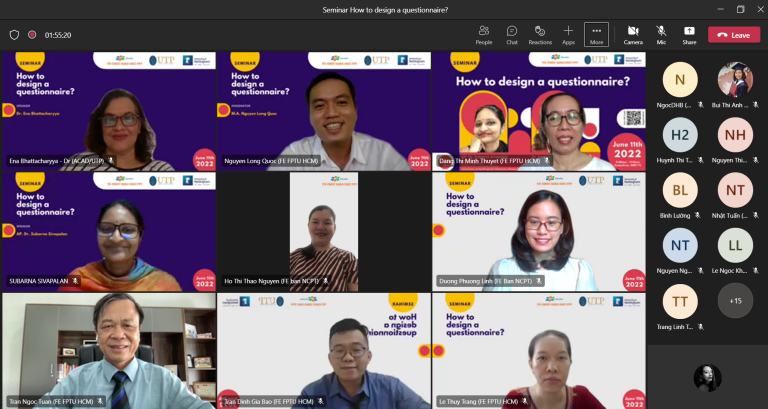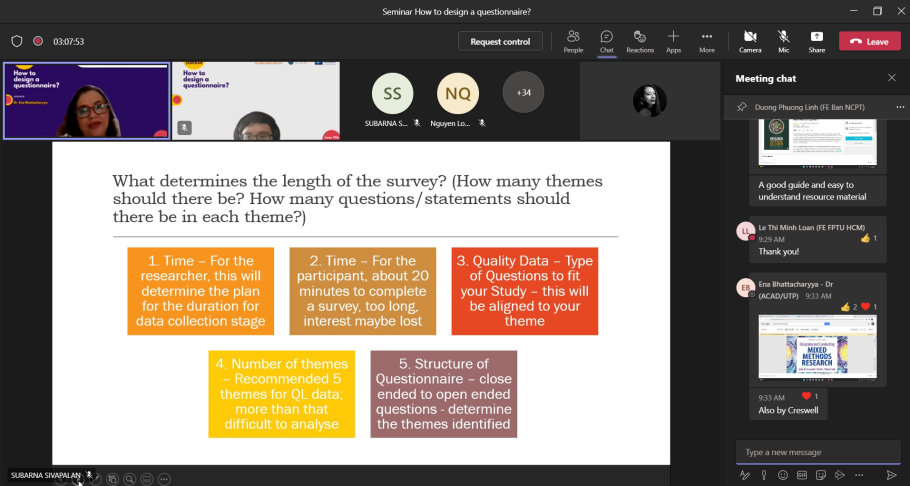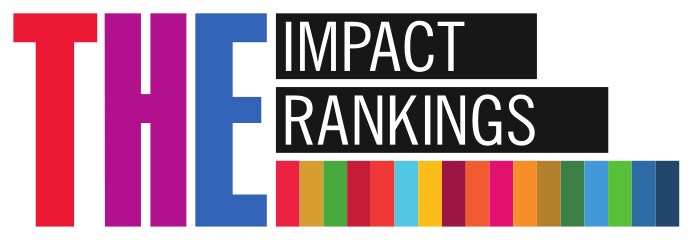On June 11th 2022, a seminar on “How to design a questionnaire?” was conducted, which provided participants with insightful knowledge about how to construct a questionnaire and a survey.

The seminar was run virtually via Microsoft Teams platform and attended by lecturers from FPT University (hereinafter referred as to FU). On behalf of the organizing committee, at the beginning of the seminar, Dr. Tran Ngoc Tuan, the Vice Rector of FU, the Director of FU HCM, gave a brief opening remark to welcome all the distinguished guests and speakers. He also stated the significance of a research project and its contributing factors, one of which is a questionnaire. Being one of the institutions that puts a great emphasis on staff development, especially lecturers and researchers, the seminar invited two international speakers, namely AP. Dr. Subarna Sivapalan (Head of School of Education, Faculty of Arts and Social Sciences, University of Nottingham, Malaysia) and Dr. Ena Bhattacharyya (Senior Lecturer, Department of Management and Humanities Institute of Self Sustainable Building, Universiti Teknologi PETRONAS, Malaysia), who are both experienced and have insightful knowledge in education and research sectors, to present at the seminar and discuss related matters to the participants.
Key notes when designing a questionnaire
To start her section, AP. Dr. Subarna provided the audience with an example of her previously made questionnaire, and explained how it is segmented before being enlisted in her full paper. Choosing a proper methodology is a long procedure, however, it is suggested that researchers “choose the best approach that most suits your research issue, do not ever construct it upon your objective or preference,” said AP. Dr. Subarna. To continue the speech, Dr. Ena emphasized the importance of research scope based on her own experience in previous research projects. Future researchers were advised to narrow down their target population and choose the most appropriate type of question in the questionnaire.
When designing a questionnaire, it was necessary to “know what your research is about, what purposes your research serves, and how your audience can benefit from answering the questionnaire, etc.,” said Dr. Ena.

Key takeaways:
– Ethical issues are a major aspect to take into consideration. Research and the do-er must get approval from their institution for research conduct
– Author must get consent from the participants (if they let the author use their answers for data or not)
– Take participants’ background into account (should be placed on the front page of the paper)
– Pay attention to questionnaire dimensions
– Copyright information must be included (serious matter of intellectual property)
– Note in the questionnaire for the participants to know what you (the author) expect from them and their answers
The 2.5-hour seminar was able to provide the audience with valuable knowledge about research conduct, and attendees were eager to join in the Q&A session with the speakers.
Being a session of the annual lecturer exchange program, this seminar successfully equipped participants with useful information related to research activity. It also served as a platform for lecturers to partake in and have direct discussion with professional speakers.
Source: https://daihoc.fpt.edu.vn/lam-the-nao-de-xay-dung-bang-hoi-nghien-cuu-hieu-qua-nhat/?fbclid=IwAR0h2tO_0MBTrQv-QQU976iyS6fB_HB393QJkl3_79AyzmP5YgI9T7e85jk


